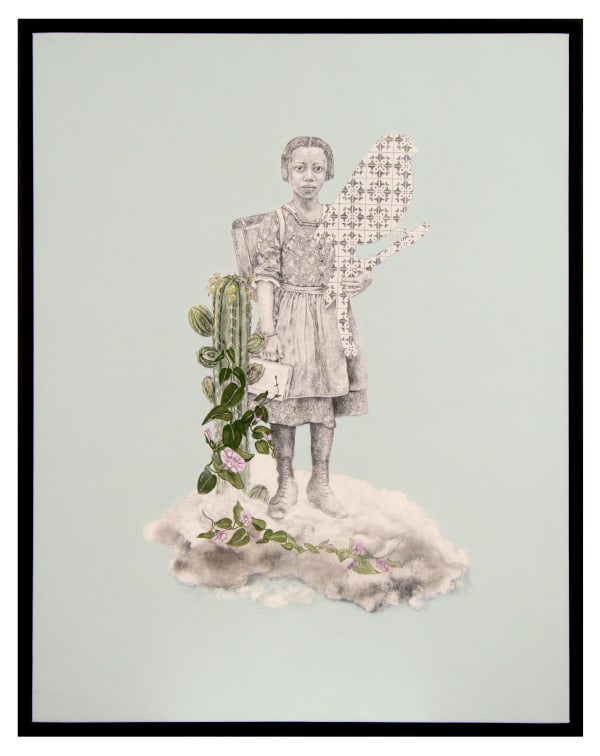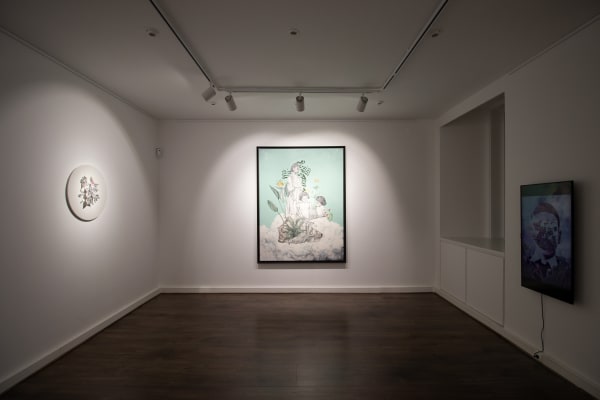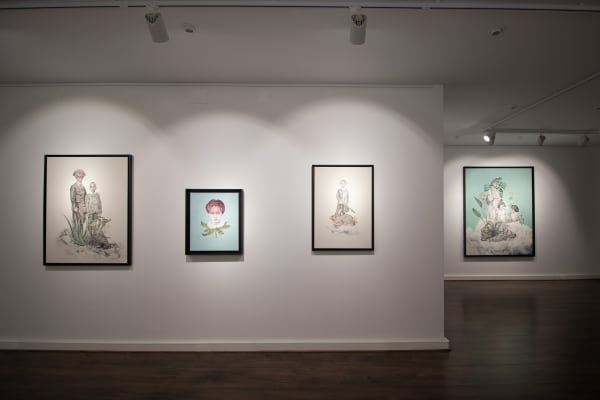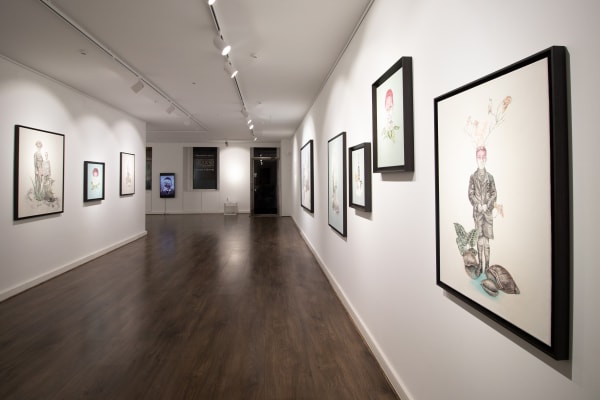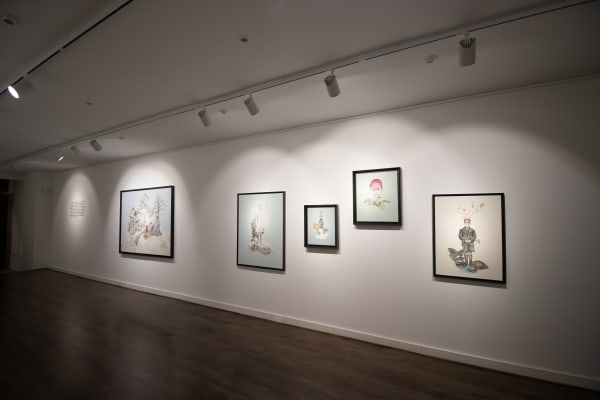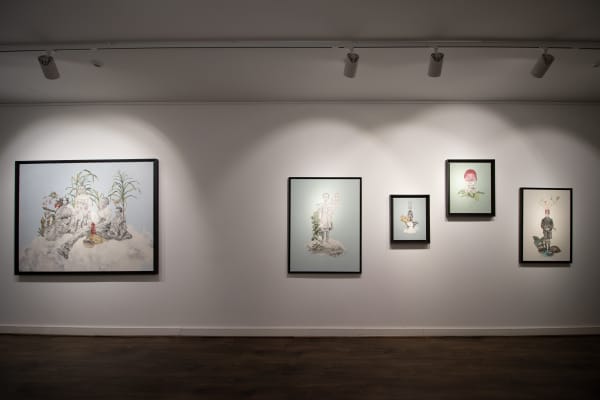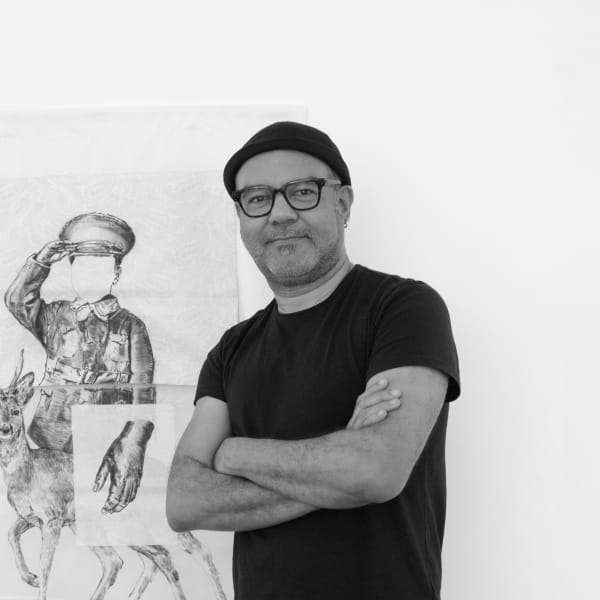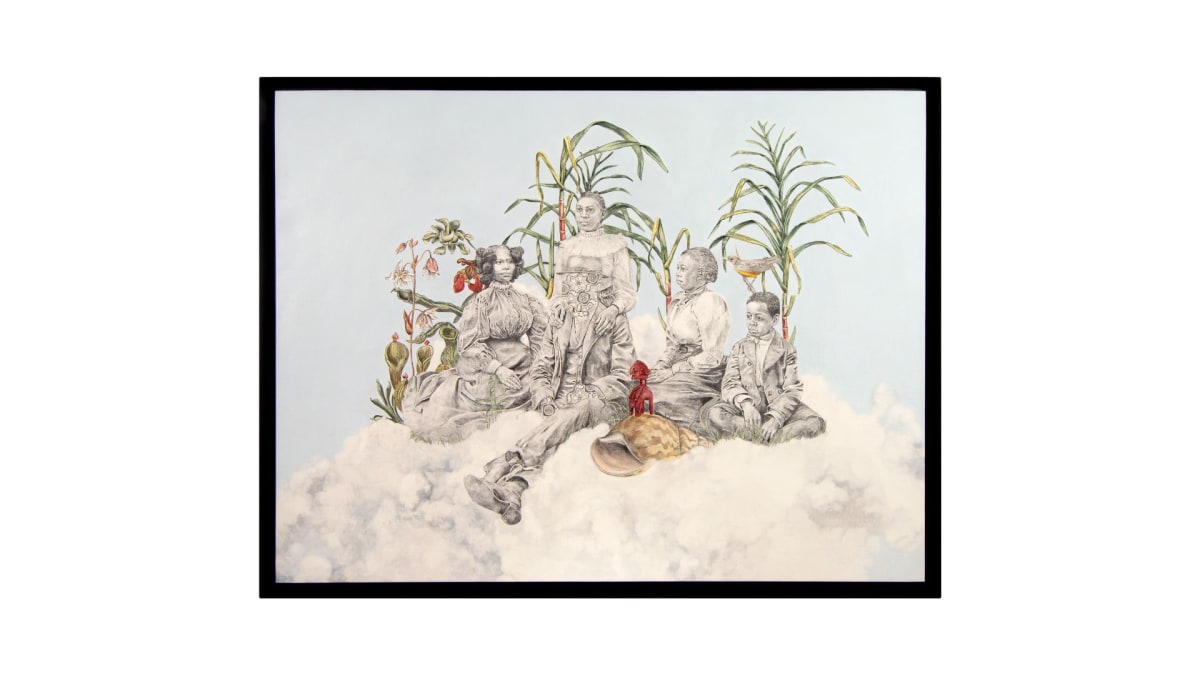THIS IS NOT A WHITE CUBE gallery presents on November 26th, in Lisbon, "There Was A Time When I Could Be Anything” - a solo exhibition by Cássio Markowski.
The Lisbon-based Brazilian artist Cássio Markowski (b. 1972) mainly works across drawing and painting, besides exploring video and installation as means of expansion of his practice. The artist’s production encompasses a process of documentation on different socio-cultural aspects of Afro-Brazilian history. This approach relies on a constant search in archives, image databases and flea markets from where the artist collects ancient books, photographs, illustrations, newspapers, advertisements or old family albums. Markowski’s visual universe, simultaneously auto-biographic and fictional, political and poetic, fuses his own personal memories with collective experiences and trauma, while often referencing religious iconography, especially the Brazilian syncretic version of Catholicism.
The pieces produced for this exhibition reach a rigorous and sophisticated process that involves several layers of interventions. After preparing the raw linen canvas with a first stratum of acrylic plaster coating, Markowski draws the major lines of his preconceived compositions with graphite. The artist then applies a covering vinyl paint layer on which he intervenes with gouache for the non-human motifs, with charcoal and graphite for the drawn figures. This ultimate intervention overlaps all the chromatic elements.
In a subtle but effective way, Markowski brings in allusions to political issues regarding colonization and slavery. The artist’s creative process goes through an exploration and a deconstruction of the past to shape some sort of ideal world imbued with touches of serenity, nostalgia and mystery. This imaginary time and space to which the title of this exhibition is related, either refers to childhood—a time of innocence prior to dealing with the harshness of socio-political realities—or to a dreamed, unspoiled and peaceful Africa. The characters depicted in a figurative and realist manner are mostly children and women who are amongst the most vulnerable members of society. In Markowski’s world, they stand strong, in communion with nature, and bravely look the viewers in the eyes. A behavior that was strictly prohibited to black people under slavery and servitude. In other pieces, the children focus on reading and studying, activities that were equally inaccessible for black communities. Needless to say that portraiture, even under photographic form, was almost nonexistent in Brazil for afro-descendants. Thus, the artist mostly appropriates Afro-American portraits captured during the first half of the 20th century. From an experience of suppression of his African cultural references, Markowski willingly puts into practice a therapeutic relationship with these repressed dimensions of his own identity. The remembrance along with the supplement of beauty that is added to the conceptual and often minimalist images tend to perform some sort of cathartic or magical healing.
The human alliance with nature is another key element in Markowski’s work. In this unreal world of his, the fragile and delicate flora and fauna stand in their grace and beauty and gently fuse with the characters. The dream-like atmosphere is enhanced by the unexpected juxtaposition of natural elements and motifs laden with symbolic meanings such as plants resting on majestic clouds, which evoke churches' traditional iconography or a blazing Sacred Heart hanging on a branch of a banana tree. The communion with a luxuriant and pristine nature contrasts with the persistent state of estrangement and the loss of connection with its cycles, its forces and frailties. For the artist, the natural world is a favorable wellspring, a space for silence and contemplation, a constantly renewing source of inner strength that can lead to meaningful and benevolent actions. How to accommodate one’s poetry and lust for freedom, justice and beauty with the world we live in? Through a genuine reconnection with nature and selfhood. There lies perhaps the core of what Markowski is telling us through his refined and elegant drawings.
Concerned with issues of cultural identity and of almost lost traditions, Cássio Markowski’s work emphasizes the tenuous remaining links between past and present, sparkling a renewed perception while highlighting and enhancing their aesthetic, spiritual and universal value.
(Katherine Sirois, Curator)
-
 Cássio Markowski, A Família, 2022
Cássio Markowski, A Família, 2022 -
 Cássio Markowski, A Flor do Mandacaru, 2022
Cássio Markowski, A Flor do Mandacaru, 2022 -
 Cássio MarkowskiAs Leitoras #2, 2022Vinyl paint, graphite pencil and gouache on linen180 x 140 x 2 cm; (framed) 185 x 145 x 4 cm
Cássio MarkowskiAs Leitoras #2, 2022Vinyl paint, graphite pencil and gouache on linen180 x 140 x 2 cm; (framed) 185 x 145 x 4 cm -
 Cássio Markowski, Alice, 2022
Cássio Markowski, Alice, 2022 -
 Cássio Markowski, N. Senhora do Pranto Tirai Esse Quebranto, 2022
Cássio Markowski, N. Senhora do Pranto Tirai Esse Quebranto, 2022 -
 Cássio Markowski, Jacaré, 2022
Cássio Markowski, Jacaré, 2022 -
 Cássio Markowski, Nossa Senhora do Banzo, 2022
Cássio Markowski, Nossa Senhora do Banzo, 2022 -
 Cássio Markowski, Comigo Ninguém Pode #01, 2022
Cássio Markowski, Comigo Ninguém Pode #01, 2022 -
 Cássio Markowski, Comigo Ninguém Pode #02, 2022
Cássio Markowski, Comigo Ninguém Pode #02, 2022 -
 Cássio Markowski, Conselhos para meu eu quando jovem, 2022
Cássio Markowski, Conselhos para meu eu quando jovem, 2022 -
 Cássio Markowski, Havia um tempo em que eu podia ser tudo, 2022
Cássio Markowski, Havia um tempo em que eu podia ser tudo, 2022 -
 Cássio Markowski, Sagrado Coração, 2022
Cássio Markowski, Sagrado Coração, 2022 -
 Cássio Markowski, Tapir, 2022
Cássio Markowski, Tapir, 2022
-
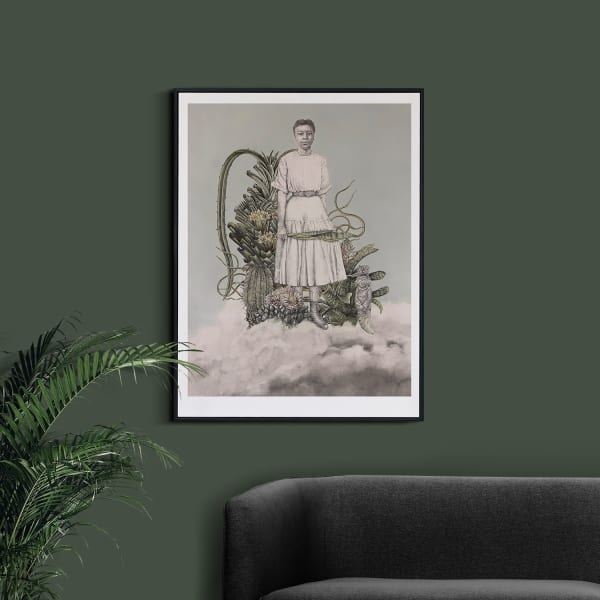
Guerreira e Egungun (Warrior and Egungun)
LIMITED EDITION PRINT Cássio Markowski, 2024A2Read more
Publisher: THIS IS NOT A WHITE CUBE Gallery
Dimensions: 55,5 x 42 -

Sagrado Coração
Limited Edition Print Cássio Markowski, 2022A2Read more
Publisher: THIS IS NOT A WHITE CUBE Gallery
Dimensions: 55,5 x 42 -

There Was a Time When I Could be Anything | Solo Show by Cássio Markowski
Exhibition Catalogue Cássio Markowski, Katherine Sirois, 2022A4 48 pagesRead more
Publisher: THIS IS NOT A WHITE CUBE Gallery
Dimensions: 29,7 x 21



